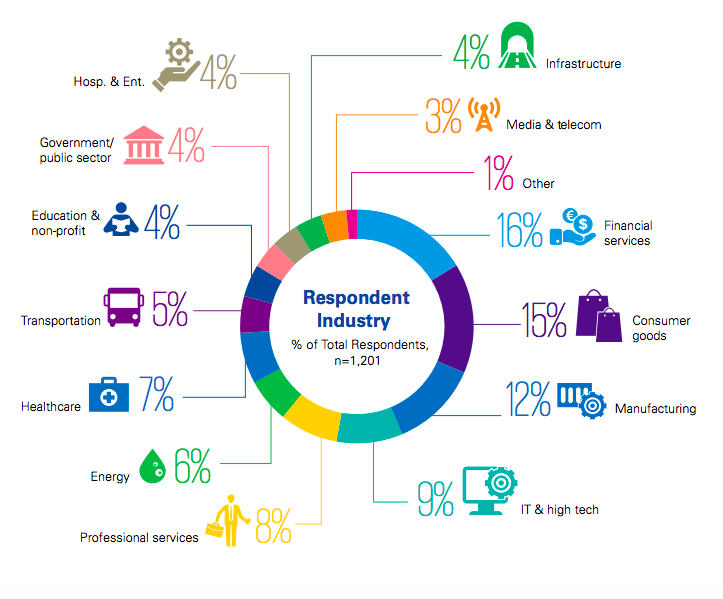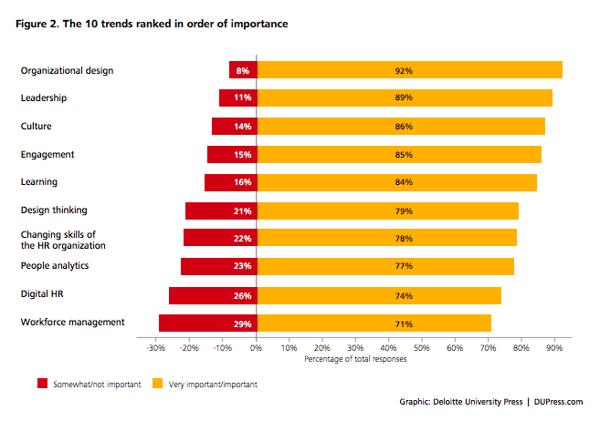30 human resources statistics you should know

Information is synonymous with better decision making, so we’ve compiled 30 human resources statistics you should know to help you manage your HR department successfully.
Analysis enables you to better steer your business development and focus your strategy to better meet your organisation’s objectives. Data is changing the way human resources are managed, so much so that a new trend known as People Analytics has emerged. This focuses on the use of data in the working environment to effectively manage human talent. Analytical capacity is one of the skills that all human resource profiles should be working on today.
Kenjo not only uses industry metrics to understand the sector’s needs and improve our product, but also to help you get the most from your company data to make better decisions. To do so, our software incorporates analytics dashboards that enable you to spot trends, satisfaction levels and employees’ performance. We know the importance of making decisions based on real, updated and objective data.
We know that finding updated reports and relevant statistics is time-consuming, so we’ve collected information and divided it into categories to provide you with objective and valuable information at your fingertips.
Statistics on the digitisation of the human resources department
The digitisation phenomenon is gradually spreading through human resource departments across many businesses. Learning about and understanding this process will enable you to better adapt and capitalise on all the benefits these new technologies offer. With our human resources management software you’ll save 40% on the time spent doing administrative tasks.
We’ve extracted some interesting statistics from a study by KPMG (2019) based on interviews with 1200 professionals.
1. Two out of three human resources managers agree that the sector is experiencing digital transformation.
2. Only 40% of them have a road map to approach this new phase.
3. Seventy percent of those interviewed acknowledge the need to tackle this transformation.
4. Even so, only 37% are confident in their ability to tackle these changes and use technology such as, for example, artificial intelligence.
5. Organisational culture was named as one of the main obstacles to digitisation by 41% of those interviewed, because this is geared more towards tasks and results than towards innovation and experimentation.
6. In recent years, 49% of companies have invested in human capital management programmes and 32% of them, in cloud space.
7. During the next few years, 60% of departments are expected to invest in predictive analysis, 53% in process automation and 47% in artificial intelligence.
8. Only 14% of departments have dared to invest in artificial intelligence in recent years.
9. A total of 88% of them believe it has been worth it.
10. Among recruiters, 76% believe that artificial intelligence will play a fundamental role in the coming years.
Work motivation statistics
Workforce motivation and well-being now figure among the priorities of any department. These factors depend on employee commitment levels, their productivity and results achieved. A burnt out and often fragmented team poses high costs for the company.
What can you do to ensure your team is always highly motivated? These human resources statistics will help you improve in this area:
11. Sixty-nine percent of workers admitted they would work more if they felt that their work was appreciated.
12. Highly committed teams are 21% more efficient.
13. Teams that are more motivated also show 41% lower absenteeism rates.
14. Employee turnover is also 59% lower.
Work climate surveys are useful to help you gauge the level of employee motivation. You can measure employee satisfaction with the help of a specific programme such as Kenjo, by sending them a simple automatic questionnaire. You will receive valuable data that will enable you to create action plans for the continuous improvement of their experience and connection with the company.
* Source: Socialcast and Gallup.
Employee retention statistics
Employee retention data is another statistic that human resources should take into consideration. In other words, how long on average does a person stay in the company?
In the past, this figure would have run into several years, although today, and particularly among millennials, frequently changing jobs has become the norm in order to improve their conditions and seek new challenges. This involves higher costs for companies, which is why it’s important to find the formula for retaining your own talent.
15. Eighty-three percent of employers believe that attracting and retaining talent is one of the biggest recruitment challenges.
16. The lack of professional development was stated as the reason why 22% of employees left their jobs.
17. The inability to establish a work-life balance was responsible for another 12%.
18. Some 11% disagreed with the organisation’s administrative behaviour.
19. Compensation and benefit issues led to the resignation of 9% of employees.
20. Nine percent did not feel at ease in the company.
* Source: Allegis Group and Work Institute.
Employer branding statistics
Transmitting a good employer branding image is vital when attracting talent. This can be achieved by improving the candidate and employee experience from the moment they see a job vacancy and make initial contact, and throughout their entire relationship with the company. We found some interesting human resources statistics on the subject, shown below:
21. Some 83% of professionals research the company before applying for a job.
22. A bad interview experience can influence the opinion of 80% of candidates about a company, even though they may have had a good opinion of them beforehand.
23. In turn, 87% acknowledged that a positive experience can change their opinion.
24. Companies that invest in the candidate experience improve the quality of new recruits by 70%.
25. Employer branding has a significant impact on the talent selection process, according to 75% of industry professionals.
26. Only 22% of human resources managers believe they have managed to create a unique experience.
27. Bad employer branding increases recruitment costs by 10%.
* Source: Glassdoor, LinkedIn, Deloitte and Harvard Business Review.
Using a candidate management software (ATS) can be extremely useful in improving the employer branding image and creating a pleasant experience for candidates during the selection process. You will be able to perform a more comprehensive tracking process in a much simpler way, as well as keeping them regularly informed.
At Kenjo, we also incorporate the onboarding process. When the selected candidate joins the company, it’s crucial to give them a warm welcome and help them to adjust. Our software will help you prepare for the first day and continue to create a pleasant process at every stage.

Career path statistics
Companies are putting more emphasis on professional development for employees to improve retention and motivation levels. Nevertheless, many employees feel disconnected or a lack of professional growth. Some human resources statistics demonstrate this:
28. Some 7% of human resources managers have accelerated the development of career paths for millennials.
29. A total of 63% of millennials state that their leadership skills are not being fully developed.
30. Eighty percent of these professionals prefer to seek new career challenges.
* Source: Deloitte and Glassdoor.
Digitise your HR department
Human resources statistics in the organisation reveal that technology can have a huge impact on different areas: from attracting talent to motivating employees. All of these are important for creating a good working environment and ensuring the company meets its business objectives.
Kenjo is a human resources software designed for companies that want to digitise the HR department and begin capitalising on its benefits:
- Save time: up to 40% in administrative tasks. The system works for you, enabling you to automate tasks and become more efficient.
- Cost reduction: Both in the time invested by the human resources team or on servers, because our technology sits in the cloud.
- Security: we perform regular security backups so ensure that your data is safe.


